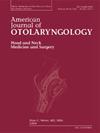Head and neck cancer trends in Ohio: Examining temporal, anatomical, and geospatial patterns across Appalachian and non-Appalachian regions
IF 1.7
4区 医学
Q2 OTORHINOLARYNGOLOGY
引用次数: 0
Abstract
Purpose
Head and neck cancer (HNC) is the seventh most common type of cancer worldwide. Compared to the rest of the United States, Appalachia has higher incidence rates of HNC. The purpose of this project is to examine the temporal, anatomical, and geospatial variances in head and neck cancers across Ohio, focusing on disparities between Appalachian and non-Appalachian regions.
Methods
Data was sourced from the Center for Disease Control and Prevention and Surveillance, Epidemiology, and End Results database. The incidence and mortality rates of HNC across Ohio were identified and sub classified based on anatomical site. Social determinants of health and environmental factors affecting HNC raters were compared between Appalachian and non-Appalachian regions.
Results
The incidence (R = 0.9, P < 0.01) and mortality (R = 0.8, P < 0.01) of head and neck cancer increased significantly from 1999 to 2021 and demonstrated a relationship with mortality (R = 0.3, P < 0.01). Adult smoking (R = 0.5, P < 0.001), obesity (R = 0.5, P < 0.001), and dentist rates (R = 0.3, P < 0.01) were associated with HNC rates. Mean mortality was significantly higher for Appalachian (mean = 10.7, SD = 2.6) than non-Appalachian (mean = 8.6, SD = 2.4) regions (P < 0.01) communities.
Conclusion
These findings emphasize the importance of addressing modifiable risk factors through smoking cessation, weight management, and dietary improvements. The difference in mortality between Appalachian and non-Appalachian regions underscores the role of geographic and socioeconomic disparities in shaping health outcomes across Ohio.
俄亥俄州头颈癌趋势:检查阿巴拉契亚和非阿巴拉契亚地区的时间、解剖和地理空间模式
头颈癌(HNC)是全球第七大常见癌症类型。与美国其他地区相比,阿巴拉契亚的HNC发病率更高。该项目的目的是检查俄亥俄州头颈癌的时间、解剖和地理空间差异,重点关注阿巴拉契亚地区和非阿巴拉契亚地区之间的差异。方法数据来源于美国疾病控制与预防监测中心、流行病学和最终结果数据库。根据解剖部位对俄亥俄州HNC的发病率和死亡率进行鉴定和亚分类。在阿巴拉契亚地区和非阿巴拉契亚地区比较了影响HNC评分者的健康社会决定因素和环境因素。结果患者的发病率(R = 0.9, P <;0.01)和死亡率(R = 0.8, P <;0.01)的头颈癌发病率在1999 - 2021年间显著增加,并与死亡率相关(R = 0.3, P <;0.01)。成人吸烟(R = 0.5, P <;0.001),肥胖(R = 0.5, P <;0.001),牙医率(R = 0.3, P <;0.01)与HNC发生率相关。阿巴拉契亚地区的平均死亡率(平均值= 10.7,SD = 2.6)显著高于非阿巴拉契亚地区(平均值= 8.6,SD = 2.4) (P <;0.01)的社区。结论:这些发现强调了通过戒烟、体重管理和改善饮食来解决可改变的危险因素的重要性。阿巴拉契亚地区和非阿巴拉契亚地区之间的死亡率差异强调了地理和社会经济差异在塑造俄亥俄州健康结果方面的作用。
本文章由计算机程序翻译,如有差异,请以英文原文为准。
求助全文
约1分钟内获得全文
求助全文
来源期刊

American Journal of Otolaryngology
医学-耳鼻喉科学
CiteScore
4.40
自引率
4.00%
发文量
378
审稿时长
41 days
期刊介绍:
Be fully informed about developments in otology, neurotology, audiology, rhinology, allergy, laryngology, speech science, bronchoesophagology, facial plastic surgery, and head and neck surgery. Featured sections include original contributions, grand rounds, current reviews, case reports and socioeconomics.
 求助内容:
求助内容: 应助结果提醒方式:
应助结果提醒方式:


